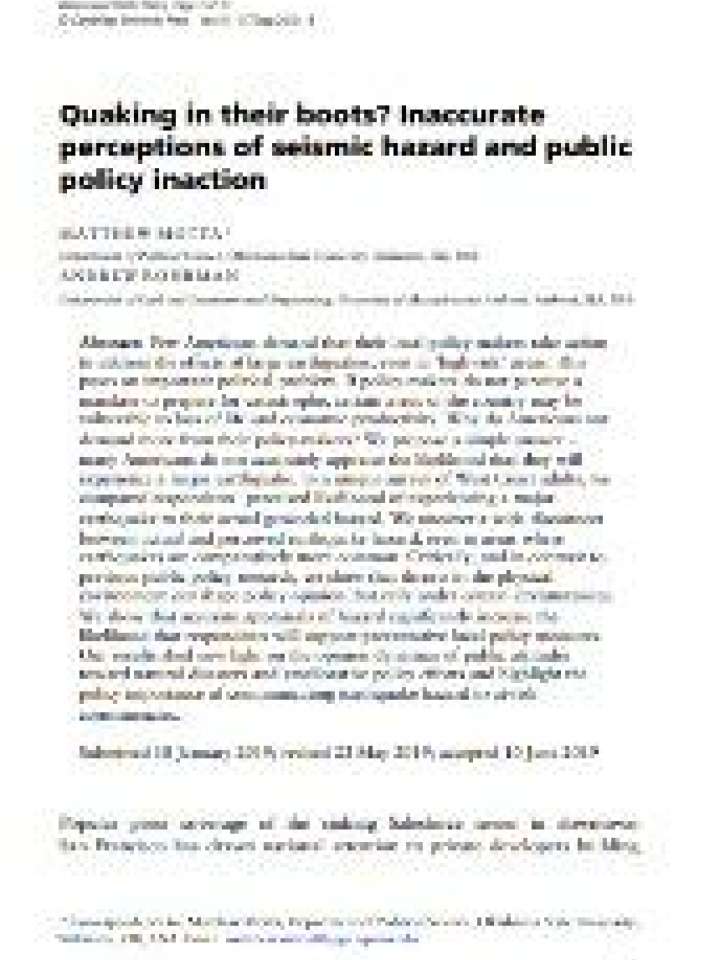Quaking in their boots? Inaccurate perceptions of seismic hazard and public policy inaction
Few Americans demand that their local policy-makers take action to address the effects of large earthquakes, even in ‘high-risk’ areas. This poses an important political problem. If policy-makers do not perceive a mandate to prepare for catastrophe, certain areas of the country may be vulnerable to loss of life and economic productivity. Why do Americans not demand more from their policy-makers? The authors propose a simple answer – many Americans do not accurately appraise the likelihood that they will experience a major earthquake. In a unique survey of West Coast adults, the authors compared respondents’ perceived likelihood of experiencing a major earthquake to their actual geocoded hazard.
This research uncovers a wide disconnect between actual and perceived earthquake hazard, even in areas where earthquakes are comparatively more common. Critically, and in contrast to previous public policy research, the paper shows that threats in the physical environment can shape policy opinion, but only under certain circumstances. The authors show that accurate appraisals of hazard significantly increase the likelihood that respondents will support preventative local policy measures. These results shed new light on the opinion dynamics of public attitudes toward natural disasters and ameliorative policy efforts and highlight the policy importance of communicating earthquake hazard to at-risk constituencies.
Explore further
